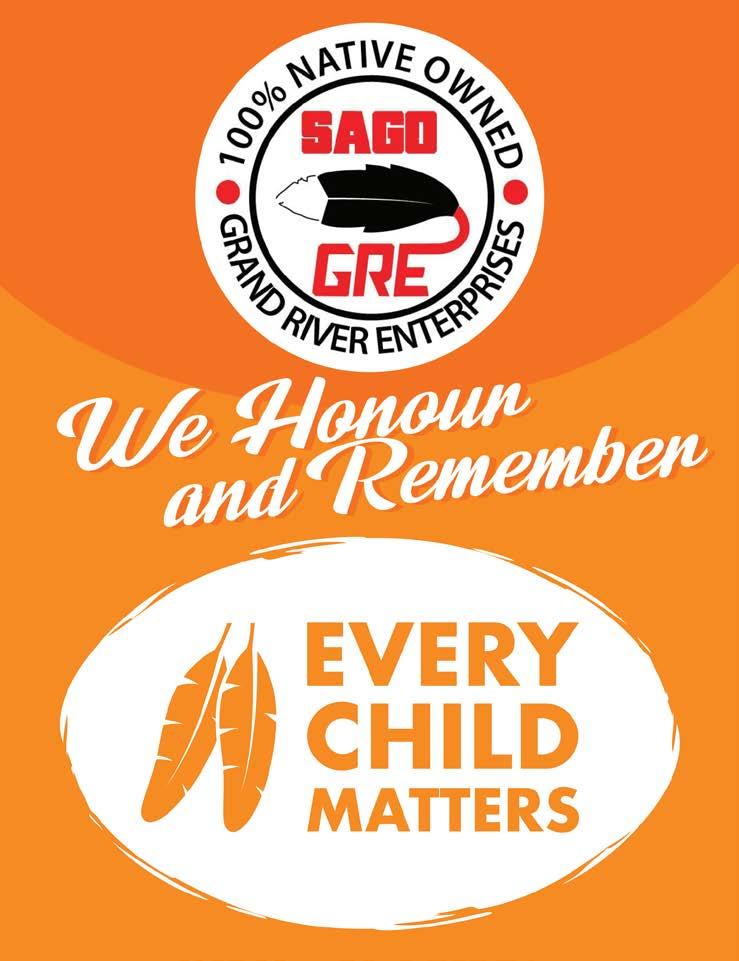



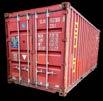



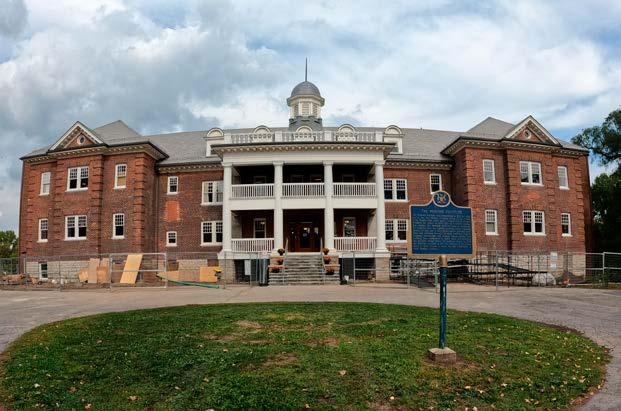
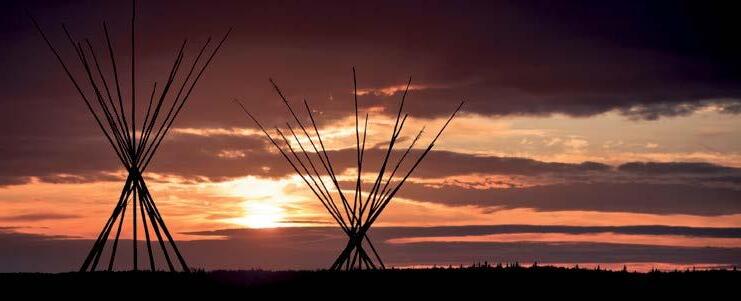












Applications for a contract position for Constable with the Six Nations Police are now being called for.
All applicants must fill out a standard application form available at the Six Nations Police Station.
CRITERIA for applicants are as follows:
Minimum Requirements to be considered for a career in First Nations Policing with the Six Nations Police Service, you must:
- Be 19 years of age or over and able to provide an official birth certificate or proof of age;
- Be physically and mentally able to perform the duties of the position having regard to your own safety and the safety of members of the public
- Have successfully completed at least 4 years of Secondary School education or its equivalent (official transcripts and diplomas will be required)
- Be of good moral character and habits, meaning that you are an individual other people would consider being trustworthy and having integrity, with no criminal record;
- certified by a physician to be fit for duty as a front line Six Nations Police Constable and able to pass physical tests which are required in the recruiting process
- Possess a valid driver’s license with no more than 6 accumulated demerit points, permitting you to drive an automobile in Ontario with full driving privileges
- Be able to pass a security clearance as well as background investigation, credit card and reference checks
If you have any criminal convictions under a Federal Statute you must obtain a pardon.
Special Requirements – for the Six Nations Police Service, in order to address the unique and at times urgent needs of the Six Nations of the Grand River Community and Haudenosaunee culture, additional requirements include:
- Extensive knowledge of the unique social dynamics of the Six Nations of the Grand River Territory
- A sound understanding of Haudenosaunee culture, customs, traditions and social political issues of the Six Nations of the Grand River
- Six Nations of the Grand River Band Membership/Citizenship and residency is considered a preferred asset and
- Membership or extensive working experience with any Indigenous Nation will also be considered an asset
Desirable Qualifications:
• Six Nations Band member preferred
Assets:
• Previous policing related experience
• Law and security courses, etc.
Closing Date: Applications must be received by 3:00 p.m October 3, 2025.
Applications in complete form are to be mailed or hand delivered to:
Six Nations Police P.O. Box 758 2112 4th Line Road
Ohsweken, Ontario N0A 1M0
Attention: Policing Administrator
dential School as an Interpretive Historic Site and Educational Resource.”
A place once meant to harm Indigenous people will now become a place of education and healing.
On Sept. 30, the Woodland Cultural Centre will officially unveil the former Mohawk Institute Residential School as an Interpretive Historic Site on the National Day for Truth and Reconciliation.
Media got a sneak peak at the former Mohawk Institute as a newly designated historic site on Monday while the official opening will happen on Sept. 30.
“The Woodland Cultural Centre (WCC) is honoured to announce the official reopening of the former Mohawk Institute Resi-
The WCC said the event will mark, “a significant step toward truth-telling, education, remembrance, and reconciliation."
The former Mohawk Institute, also known as “The Mush Hole,” was the oldest and longest-running residential school in Canada.
From 1828 to 1970, it operated as part of a government and churchrun system that impacted Indigenous communities, separating children from their families and cultures. "The WCC is committed to ensuring the stories and experiences of Survivors are shared and understood, contributing to a more just and equitable future.”
On Sept. 30, the Mo-
hawk Institute will reopen as an Interpretive Historic Site and Educational Resource dedicated to:
• Truth-Telling: Sharing the authentic history of the residential school system in Canada and the experiences of Survivors.
• Remembrance: Honouring the lives and legacies of all those affected by the Mohawk Institute and other residential schools.
• Education: Providing opportunities for visitors to learn about Indigenous history, culture, and perspectives.
• Reconciliation: Fostering dialogue, understanding, and action toward a more just and equitable relationship between Indigenous and
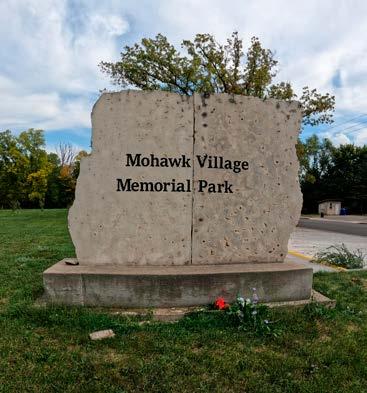
non-Indigenous peoples.
Heather George, Executive Director of the Woodland Cultural Centre, said, “We are grateful to the Survivors, donors, former Woodland staff, contractors, and partners at all levels of government for supporting us in completing this major undertaking and preserving the evidence of the history of the longest-running residential school in Canadian history. It is made all the more meaningful by the fact that we are re-opening the building to the public as we reach the 10th anniversary of the final report of the Truth and Reconciliation Commission of Canada. Of the 97 Calls to Action that accompanied the report, a number address Education and Heritage, and we are honoured to work to uphold these Calls and be part of the truth-sharing process necessary for true reconciliation to occur.”
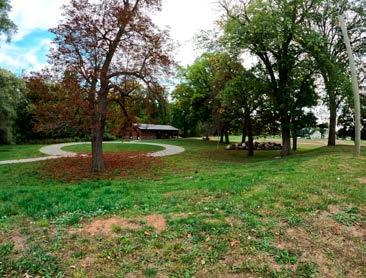
Following the 2013 community support to transform the former Mohawk Institute, the WCC began restoration in 2016 after structural assessments estimated renovation costs at over $23 million. The work included multiple phases of restoration, addressing
the roof, masonry, windows, and accessibility.
To date, the “Save the Evidence” campaign has raised over $26 million and benefited from federal, provincial, and municipal government funding, private donations, and community-led initiatives.
In March 2022, WCC announced they had successfully raised the funds needed to restore the former Mohawk Institute building.
Gates will open at 9 a.m. to begin bracelet distribution for time slot admissions.
STAFF REPORT
editor@tworowtimes.com
TWO ROW TIMES
BRANTFORD - In response to the recent tragic incident at a child care centre in Richmond Hill, the Ministry of Education has directed all licensed child care centres in Ontario to implement immediate safety measures to better protect children and staff.
Effective immediately:
All licensed child care centres are being asked to prevent the use of parking spaces that pose a risk to children’s safety. This includes parking spots directly adjacent to entrances, playgrounds, program rooms, or other gathering areas. Accessible parking spaces are exempt.
All centres that do not control nearby parking are being advised to contact their landlord immediately to discuss measures
that can be put in place to increase safety.
Temporary barriers such as pylons, signage, or staff vehicles may be used until permanent protective infrastructure is installed. The Ministry is also reviewing long-term requirements, which may include bollards, planters, or elevated curbs to safeguard highrisk areas.
“Children’s safety is of highest priority. These new measures proposed by the Ministry of Education ensure that families can feel confident their child care centres are doing everything possible to protect their loved ones. We are committed to ensuring our partners implement these changes effectively,” said Mary Musson, Commissioner of Community Services and Social Development. For questions or more information, families may contact their licensed child care operator directly.
Community members 55+ are invited to join us for a lunch and entertainment. FREE
DATE: 11am-2pm TIME:
Wednesday, October 1

LOCATION:
Six Nations Community Hall (1738 Fourth Line)



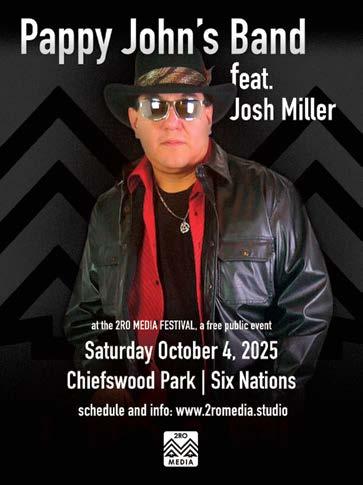
DONNA DURIC donna@tworowtimes.com TWO ROW TIMES
The Indigenous experience with sexual violence was a central theme at last week’s Take Back the Night march in Hamilton.
The Sexual Assault Centre of Hamilton and Area (SACHA) organized the annual event at Hamilton’s City Hall, where Miranda Jurilj, public education coordinator, spoke about the necessity of honouring Indigenous peoples’ experience with sexual violence at Take Back the Night.
Jurilj asked participants to honour the treaties of the land before the march took place and to live with a good, two-way relationship with the land, nature and water.
“I also want toy acknowledge how take back the night’s central purpose connects to Indigenous communities,” said Jurilj. “Tonight we are here to
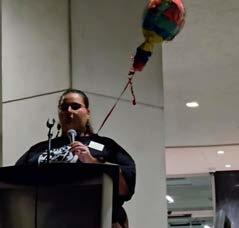
denounce sexual violence, gender-based violence and street harassment. These are all issues disproportionately affecting indigenous people. This is a result of ongoing colonization, anti-Indigenous racism and generations of harm.”
Jurilj noted there is an epidemic of missing and
murdered indigenous women, girls, trans and two-spirit peoples in this country that needed to be acknowledged at last Thursday’s march.
“We cannot have Take Back the Night without acknowledging this reality.












Indigenous people face rates of sexual violence often three and a half times more commonly than non-Indigenous people. Indigenous people face higher rates of violence by the police, by our institutions, and by interpersonal violence.”
Jurilj said being in solidarity with Indigenous communities, and actively working against systems of racism and oppression, echoing the calls for justice, and advocating for Indigenous sovereignty are all necessary for people to do the work at Take Back the Night.
“We cannot have Take Back the Night without this. This work is already happening. Work towards healing and justice and anti-racism is being led by amazing community leaders and organizers and organizations, some of whom are with us today.”
Jurilj thanked all the Indigenous organizations working alongside SACHA in Hamilton.
The red skirt fire keepers lit and tended to a sacred fire at Hamilton City Hall during the event in honour of missing and murdered indigenous women, trans and
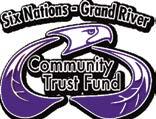
two-spirit people.
Participants also held a moment of silence for the land, water, decolonization and solidarity.
SACHA leaders led a march of about 300 people through the streets of downtown Hamilton and back to City Hall before wrapping up the event.
Take Back the Night is an annu¬al event that has been hap¬pen¬ing in Hamil¬ton for over 40 years and con¬tin¬ues to hap¬pen every Sep¬tem¬ber all over the world. Our goal is to denounce sex¬u¬al vio¬lence, gen¬der based
vio¬lence and street harass¬ment while pro¬viding a space for empow¬erment and sol¬i¬dar¬i¬ty with sur¬vivors. We will have a gath¬er¬ing with com¬mu¬ni¬ty tables, an Indige¬nous mar¬ket, live music, activ¬i¬ties, give¬aways, and more! Fol¬low¬ing that we will ral¬ly with speech¬es from com¬mu¬ni¬ty mem¬bers who will speak on our theme. And then the most icon¬ic part of the night we march with signs and chants through the streets to take up space and assert ours rights to live safely!

NOMINATIONS for one (1) Non Community Resident (Off-Reserve) Board of Trustee Member will be held on SATURDAY, October 4, 2025 at the SIX NATIONS ONEIDA BUSINESS PARK – Suite 111 (50 Generations Drive – corner of Fourth Line and Hwy 6) from 9:00AM-12:00 noon.
a) Be a registered band member of Six Nations of the Grand River.
b) Be eighteen (18) years of age or older.
c) Be a resident off Six Nations of the Grand River for a minimum of one year prior to election.
d) All candidates must be nominated by two (2) eligible nominators.
Nominee Packages will be given to each Nominee. Nominee’s will be required to complete the package to determine eligibility. Please note all nominees will need to submit a recent CPIC with their nominee packages.
Election to take place in November 2025
Chief Electoral Polling Officer – Dorothy Patteron-Russell
If you have any questions please contact Melanie Bomberry, Trust Coordinator By Email coordinator@sncomtrust.ca or Phone 905-765-1236

Kai Cenat brings Indigenous representation to one of the biggest online stages
Kai Cenat, American online streamer and YouTuber, welcomed Baac, Nanabah and family on stream during his 24/7 ‘Mafiathon 3’ livestream last week. Together, they brought Indigenous culture to millions of youth around the world.
Cenat is one of the most influential figures in pop culture today. He is an American online streamer, YouTuber, and internet personality who specializes in comedic live streams and videos.
As of 2025, he is the most-subscribed Twitch streamer in the world, as well as the second most-followed Twitch streamer with 19 million followers. Being Twitch’s No. 1 streamer, he reaches millions daily, shaping trends in music, fashion and culture that ripple far beyond gaming.
Catch Joshua Odjick in ‘The Long Walk’ Algonquin-Anishinabe and Cree star Joshua Odjick walks for his life in new film, The Long Walk, based on Stephen King’s dystopian classic, Odjick plays as contes-
tant Collie Parker, alongside Mark Hamill, Cooper Hoffman, and more. The Long Walk follows 100 boys forced into a deadly contest: walk without rest until only one remains.
The film released on Sept. 12 to critical acclaim and sits at 89 per cent on Rotten Tomatoes with 237 reviews.
Forbes called the film one of the best in Stephen King’s movie history, saying it sits above even many classics. Comments on social media compared the character’s journey to Onkwehonwe leaving home and missing community.


from the La Jolla Indian Reservation in California, made history as the first Native American designer on the official Council of Fashion Designers of America’s New York Fash-
wrote Melanie Spiess (@ Ziastrella) on Instagram.
Lily Gladstone voices support for Jimmy Kimmel

ion Week calendar.
The collection is rooted in nature, sustainability and Indigenous identity. It was premiered in a runway she and her team built themselves, using only what the sea and earth had to offer on her traditional territories. “Nature is our runway,” she wrote.
Okuma’s moment was named “One to Know” by WWD, spotlighted on Instagram’s official design page and featured on the cover of the Vogue app.
“Jamie Okuma is a talent to be reckoned with, her clothing is stunning, unique, flawless. Her clothing should have been in fashion shows around the world and magazines everywhere a while ago,”
Lily Gladstone has voiced their support for Jimmy Kimmel after ‘Jimmy Kimmel Live!’ was pulled indefinitely following his controversial remarks about Charlie Kirk’s recent death.
Quoting Justice William O. Douglas, she wrote: “Restriction of free thought and free speech is the most dangerous of all subversions.”
Gladstone shared a photo from their Dec. 2023 interview and encouraged the late-night host not to back down. Comments on social media varied in support and dislike in the American actresses online support of Kimmel.
Fashion, music and stars take over Toronto’s Casa Loma at Runway of Rezilience
On September 11, Indigenous brilliance lit up Toronto’s Casa Loma with a night of style, culture and community, featuring some of Turtle Island’s biggest stars like Adam Beach, D’Pharaoh WoonA-Tai, Devery Jacobs, Notorious Cree, and many more.
Hosted by Seeing Red Media, the second annual Runway of Rezilience brought together pop culture changemakers to Casa Loma, the historic gothic revival castle turned landmark, museum, and venue.
Highlights included a touching tribute to the late Haudenosaunee actor Graham Greene, who called nearby Six Nations
of the Grand River home. Actor Adam Beach took the mic to honour his memory.
Multiple Indigenous fashion leaders took the runway, such as Ocean Kiana, Lesley Hampton, Kreations by Kehala and more.
Seeing Red Media said this year’s Runway of Rezilience set a new bar, proving that Indigenous fashion and pop culture belong on the grandest stages. And with only two years in, it’s exciting to imagine how much bigger this gathering will grow.
Seeing Red says they are now focusing on a theatrical release for Boil Alert, a documentary about the struggle of First Nations reserves to receive a basic human right: drinkable water.

In observance of Truth & Reconciliation


Come celebrate our culture and resiliency with the smoke dance competition! You can also grab a scone dog, check-out fun activities / crafts, local craft vendors, and SNP programs.
4:00-4:30 pm: Light Refreshments 4:30-5:30 pm: Guest Speakers 6:00 - 7:00 pm: Smoke Dance Competition with singer Norman Cooke (Smoke Dance Registration is 4:00-5:30 pm)
Find out more about the programs offered at Six Nations Polytechnic.
Prizes and orange shirt giveaways
Seeking local Craft Vendors (Limited Spots)
Craft vendors please email Katrina to register Katrina.cattrysse@snpolytechnic.com


Friday, September 26 2025 4:00 pm - 7:00 pm
Six Nations Community Hall 1738 4th Line Rd. Ohsweken




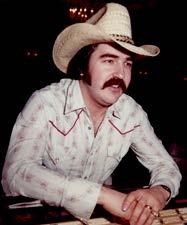
















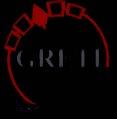


We’re thrilled to announce the Grand Opening of Ganohsa’o:weh (Original House) and you’re invited! No registration required. Come for a tour!
Monday, September 29, 2025




TIME: 5-7PM
993 HWY 54, Ohsweken ON, NOA 1M0
Questions or concerns please reach out to GRETI Communications Team
samantha@gretisn.org | krystle@gretisn.org
administered by Christian churches.
Orange Shirt Day, and the National Day for Truth and Reconciliation, are both recognized on September 30. It is a day where the children who were sent to residential schools in Canada are honoured and we learn more about the true history behind those schools.
In Canada, the Indian residential school system was a network of boarding schools for Indigenous peoples. Attendance was mandatory from 1894 to 1947 and the last residential school closed in 1996. The network was funded by the Canadian government’s Department of Indian Affairs and
“Two primary objectives of the residential schools’ system were to remove and isolate children from the influence of their home, families, traditions and cultures, and to assimilate into the dominant culture,” reads “An Overview of the Indian Residential School System” on anishnabek.ca. It is estimated that more than 150,000 Indigenous, Inuit, and Métis children attended Indian residential school.
Where did the idea of wearing an orange shirt in support come from and how did the day become a holiday?
Phyllis Webstad was given an orange shirt by her grandmother for her very first day of school at
St. Joseph’s Mission residential school in British Columbia. The “orange shirt” in Orange Shirt Day refers to that shirt. When Phyllis got to school, her clothes were taken away, including her new orange shirt that was never returned. Phyllis told CBC news that the colour orange has always reminded her of her experiences at residential school, saying, “How my feelings didn’t matter, how no one cared and I felt like I was worth nothing. All of us little children were crying and no one cared.”
Phyllis wants to convey the message that every child matters — every day. She started Orange Shirt Day in 2013 to educate people about residential schools and to fight bullying and racism.
The orange shirt is now used as a symbol of the forced assimilation of Indigenous children that the residential school system enforced. The day was made into a statutory holiday by the Parliament of Canada in 2021.
According to the Canadian Encyclopedia, the Truth and Reconciliation Commission issued its report in December 2015. It stated that residential schools represented cultural genocide. It stated 94 Calls to Action, and among them was the establishment of a national holiday to commemorate the horrors of the schools and to help in healing.
In March 2019, the House of Commons passed a bill designating Sept. 30 as an annual National Truth and Reconcil-
iation Day.
Truth and Reconciliation in Canada is all about facing the dark history of residential schools and how they've affected Indigenous people. It's about being honest about what happened, respecting the Survivors and their communities, and taking real steps to make things right. The Truth and Reconciliation Commission played a big part by collecting stories and creating 94 "Calls to Action" to help guide this process.
The "Truth" part means documenting what happened in the schools, acknowledging the cultural genocide that took place, and making sure everyone in Canada knows about it. "Reconciliation" is about healing the wounds,
fixing the damage, and making sure this never happens again. The 94 Calls to Action are specific things that governments, organizations, and individuals can do to address the legacy of residential schools, like improving Indigenous child welfare and protecting Indigenous languages. Ultimately, it's about building a new relationship with Indigenous Peoples based on respect and partnership.
The National Day for Truth and Reconciliation, September 30th also known as Orange Shirt Day. It's a day to remember the children who didn't make it home from residential schools, reflect on the past, and commit to reconciliation.
We honour and stand in solidarity with the children who survived residential schools, and remember the thousands of children who never made it home. Our Orange
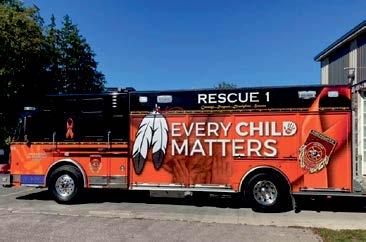



truck is a daily reminder to raise awareness.

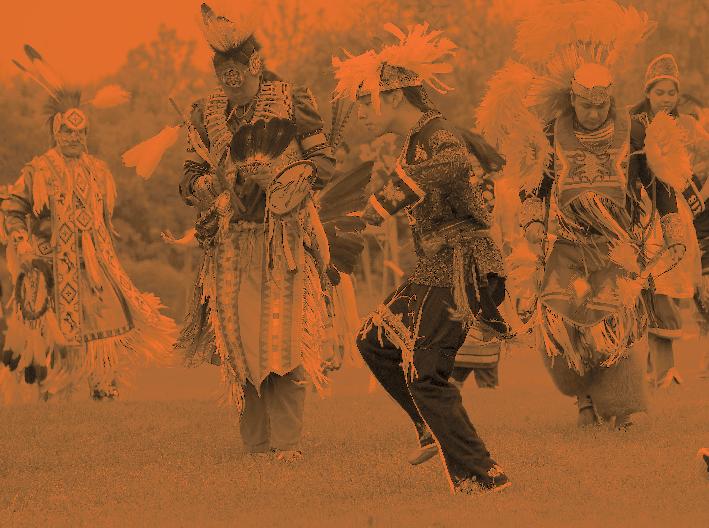
Tuesday, September 30, 2025
Today, and every day, we commit to ensuring students learn the truths of residential schools and to supporting healing, truth and justice.
Grand Erie is grateful to walk alongside Survivors, families and communities.
On September 30, we stand in remembrance and solidarity.
Grand Erie schools across the district will be recognizing National Day for Truth and Reconciliation and Orange Shirt Day with learning experiences and events during the week of September 22 to 26.

In order to redress the legacy of residential schools and advance the process of Canadian reconciliation, the Truth and Reconciliation Commission makes the following calls to action.
Legacy
Child welfare
1. We call upon the federal, provincial, territorial, and Aboriginal governments to commit to reducing the number of Aboriginal children in care by:
i. Monitoring and assessing neglect investigations.
ii. Providing adequate resources to enable Aboriginal communities and child-welfare organizations to keep Aboriginal families together where it is safe to do so, and to keep children in culturally appropriate environments, regardless of where they reside.
iii. Ensuring that social workers and others who conduct child-welfare investigations are properly educated and trained about the history and im-
pacts of residential schools.
iv. Ensuring that social workers and others who conduct child-welfare investigations are properly educated and trained about the potential for Aboriginal communities and families to provide more appropriate solutions to family healing.
v. Requiring that all child-welfare decision makers consider the impact of the residential school experience on children and their caregivers.
2. We call upon the federal government, in collaboration with the provinces and territories, to prepare and publish annual reports on the number of Aboriginal children (First Nations, Inuit, and Métis) who are in care, compared with non-Aboriginal children, as well as the reasons for apprehension, the total spending on preventive and care services by child-welfare agencies, and the effectiveness of various interventions.
3. We call upon all levels
of government to fully implement Jordan’s Principle.
4. We call upon the federal government to enact Aboriginal child-welfare legislation that establishes national standards for Aboriginal child apprehension and custody cases.
5. We call upon the federal, provincial, territorial, and Aboriginal governments to develop culturally appropriate parenting programs for Aboriginal families.
Education
6. We call upon the Government of Canada to repeal Section 43 of the Criminal Code of Canada.
7. We call upon the federal government to develop with Aboriginal groups a joint strategy to eliminate educational and employment gaps between Aboriginal and non-Aboriginal Canadians.
8. We call upon the federal government to eliminate the discrepancy in federal education funding for First Nations children
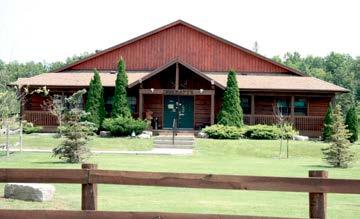
The Indian Residential Schools Settlement Agreement, the largest class-action settlement in Canadian history, began in 2007. One of the elements of the agreement was the establishment of the Truth and Reconciliation Commission of Canada (TRC) to facilitate reconciliation among former students, their families, communities and all Canadians.
Call to Action 93: Revise the information kit for newcomers to Canada and its citizenship test to reflect a more inclusive history of the diverse Aboriginal peoples of Canada, including information about the Treaties and the history of residential schools.
Since early 2017, Immigration, Refugees and Citizenship Canada has worked closely with the Assembly of First Nations (AFN), Inuit Tapiriit Kanatami and the Métis National Council, as well as Indigenous historians, to update the text and
But how has the Government of Canada been delivering on these recommendations? Let’s take a look at what’s being done under newcomers to Canada (Calls to Action 93 and 94) as we continue this series on the TRC Calls to Action.
photos of the citizenship guide.
On October 5, 2017, Immigration, Refugees and Citizenship Canada hosted a roundtable discussion with AFN representatives and First Nations experts to come to an agreement on key topics that will be included in the revised citizenship guide. A revised version of the citizenship study guide with more information on Indigenous peoples and residential schools is currently being developed.
Following the launch of the revised citizenship guide, a new citizenship test will be created that will encompass revisions made to the citizenship guide, including new

questions related to First Nations, Inuit and Métis history and perspectives. The information kit for newcomers will be revised in accordance with the updates made to the citizenship guide and test, following the launch of the revised citizenship guide.
Call to Action 94: Replace the Oath of Citizenship with the following: I swear (or affirm) that I will be faithful and bear true allegiance to Her Majesty Queen Elizabeth II, Queen of Canada, Her Heirs and Successors, and that I will faithfully observe the laws of Canada including Treaties with Indigenous Peoples, and fulfill my duties as a Canadian citizen.
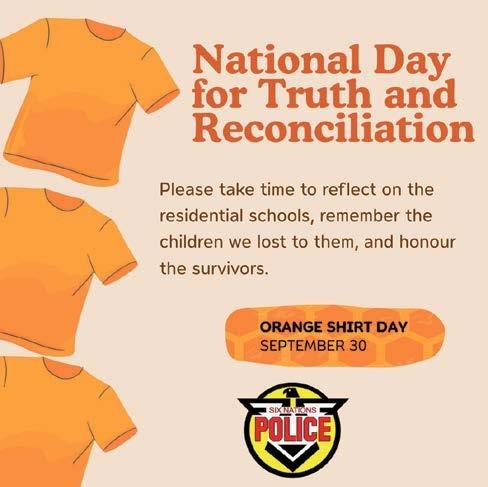
Immigration, Refugees and Citizenship Canada has worked with Crown-Indigenous Relations and Northern Affairs Canada and has engaged in consultations with the Assembly of First Nations, the Métis National Council and Inuit Tapiriit Kanatami to ensure the Oath of Citizenship reflects the Truth and Reconciliation Commission's call to action.
The oath is a solemn declaration that citizenship applicants take, promising to obey Canadian laws while fulfilling their duties as Canadian citizens. All citizenship candidates 14 years or older who apply for a grant of citizenship must take the oath as the last step before becoming Canadian citizens.

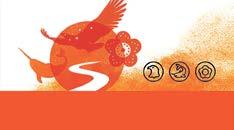
The Law Society of Ontario is marking this day by offering a free educational program focused on reconciliation with Indigenous Peoples. This event featured teachings from an Elder and representatives of the Law Society.
The keynote speakers included representatives of the Tla-o-qui-aht First Nation, British Columbia, who discussed the recent move by their First Nation, in collaboration with the provincial government, to relocate a courthouse to the site of a former residential school as part of efforts to incorporate Indigenous values into the criminal justice system.
NATIONALDAYFORTRUTHAND RECONCILIATION/ORANGESHIRTDAY TheLawSocietyofOntarioismarkingthisdaybyoffering afreeeducationalprogramfocusedonreconciliationwith IndigenousPeoples.Thiseventfeaturedteachingsfroman TauniSheldon,IndigenousKnowledgeKeeper,welcoming remarksfromtheTreasureroftheLawSocietyandDr. DanielleLussier,ChairoftheLawSociety’sIndigenous AdvisoryGroup,aswellasakeynoteaddressbythe HonourableCatherineH.Rhinelander,Judgeofthe SuperiorCourtofJustice.JusticeRhinelanderisa memberoftheYellowknivesDeneFirstNationinTreaty#8 territoryandthedaughterofaresidentialschoolsurvivor. Formoreinformationonthisevent,pleasevisit: TheLawSociety'swebsite.
Watch the archived webcast: https://lso.ca/lawyers/ equity-supports-resources/equity-legal-education-series Stay up to date on upcoming events: https://lso.ca/news-events/events NATIONAL DAY FOR TRUTH AND RECONCILIATION/ORANGE SHIRT
Watchthearchivedwebcast: LSO.ca/EDI-CPD Stayuptodateonupcomingevents: LSO.ca/news-e

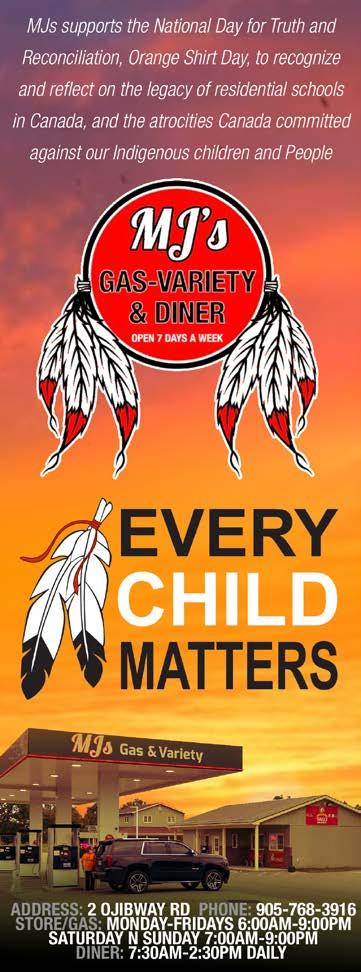
being educated on reserves and those First Nations children being educated off reserves.
9. We call upon the federal government to prepare and publish annual reports comparing funding for the education of First Nations children on and off reserves, as well as educational and income attainments of Aboriginal peoples in Canada compared with non- Aboriginal people.
10. We call on the federal government to draft new Aboriginal education legislation with the full participation and informed consent of Aboriginal peoples.
11. We call upon the federal government to provide adequate funding to end the backlog of First Nations students seeking a post-secondary education.
12. We call upon the federal, provincial, territorial, and Aboriginal governments to develop culturallyappropriate early childhood education programs for Aboriginal families.
Language and culture
13. We call upon the federal government to ac-
knowledge that Aboriginal rights include Aboriginal language rights.
14. We call upon the federal government to enact an Aboriginal Languages Act for the preservation, revitalization, and strengthening of Aboriginal languages and cultures managed by Aboriginal people and communities.
15. We call upon the federal government to appoint, in consultation with Aboriginal groups, an Aboriginal Languages Commissioner. The commissioner should help promote Aboriginal languages and report on the adequacy of federal funding of Aboriginal-languages initiatives.
16. We call upon post-secondary institutions to create university and college degree and diploma programs in Aboriginal languages.
17. We call upon all levels of government to enable residential school Survivors and their families to reclaim names changed by the residential school system by waiving administrative costs for a period of five years for the name-change process and the revision of

official identity documents, such as birth certificates, passports, driver’s licenses, health cards, status cards, and social insurance numbers.
Health
18. We call upon the federal, provincial, territorial, and Aboriginal governments to acknowledge that the current state of Aboriginal health in Canada is a direct result of previous Canadian government policies, including residential schools, and to recognize and implement the healthcare rights of Aboriginal people as identified in international law, constitutional law, and under the Treaties.
19. We call upon the federal government, in consultation with Aboriginal peoples, to establish measurable goals to identify and close the gaps in health outcomes between Aboriginal and non-Aboriginal communities, and to publish annual progress reports and assess long- term trends. Such efforts would focus on indicators such as: infant mortality, maternal health,
All Six Nations of the Grand River departments will be closed on Tuesday, September 30, 2025.
Regular office hours will resume Wednesday, October 1 @ 8:30am.


By Donna Duric
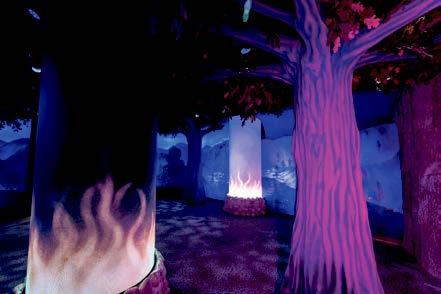
Niagara Parks has just opened a touching and wondrous educational attraction that tells the story of Indigenous people and their connection to the world-famous Niagara Falls as part of its efforts to fostering truth and reconciliation.
The Ancestors Room, part of a visually stunning new attraction called Niagara Takes Flight, is just one part of its efforts at truth and reconciliation, through art and visual storytelling.
“In terms of our mandate that’s something that’s core to us,” says Chris Giles, Director of Sales, Communications and Marketing at Niagara Parks. “Over the past few years, we’ve done some terrific work working alongside our indigenous partners.”
The Ancestors Room is the next evolution of that, he said.
“It’s the most immersive, impactful piece of Indigenous storytelling at Niagara Parks and we’re very proud of that.”
Niagara Parks says it continues to search for new ways to highlight and honour authentic Indigenous storytelling into its offerings for the public.
From interpretive signage across properties to the Landscape of Nations Memorial at Queenston Heights Park and an Indigenous audio tour at the Niagara Glen, this is the latest of Indigenous storytelling.
Before guests take off on the new flying the-
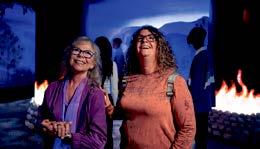

atre ride located at Table Rock Centre, they experience 13,000 years of history in a series of pre-show rooms, including the Ancestors Room, which highlights the creation story of the Haudenosaunee peoples. Through stunning original artwork by Six Nations artist Sara General brought to life by a digital animation studio, guests will enjoy an authentic, Indigenous storytelling experience, which was developed in collaboration with an Indigenous Advisory Panel including Tim Johnson, Phil Davis, Jennifer Dockstader and Fran Davis, to ensure Indigenous perspectives and histories were represented with depth and respect.
The attraction opened to the public on Aug. 29. It simulates flight over Niagara Falls and surrounding sites.
“What we really wanted to do was tell the story of 13,000 years of Niagara history,” said Giles.
“The whole time that Niagara Falls that has been forming people have been watching that take place.”
The immersive pre-show rooms depict the Falls over 13,000 years and you’ll see people throughout history watching the falls move and change over time.
General’s original artwork brought the Ancestors Room to life.
“We were able to work with her. She produced a style guide of artwork to tell the story.”
An animator then brought her vision and imagery to life.
“The imagery appears out of the smoke of the fire pits,” said Giles. “It’s telling the Creation Story and it’s narrated by Indigenous voices, as well. We’re definitely proud of how it came together.”
On a 55-foot-wide screen, visitors get buckled into a gondola seat. With motion-based seats and sensory effects like wind, mist and scent, it feels like they are flying.
The full attraction lasts about half an hour and costs $29 for adults and $19 for children.
Niagara Parks is also lighting up the Falls orange for National Truth and Reconciliation Day and they’re going to release a video, as well.
“We have a commitment to reconciliation,” said Giles.
The attraction ties into the educational component of one of the Truth and Reconciliation Report’s 94 Calls to Action.
Giles recommends visiting the Niagara Takes Flight tour as one of the first attractions to visit for guests coming to the falls for the first time.
“It’s a great introduction to the destination for new visitors,” he said.
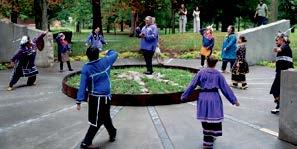

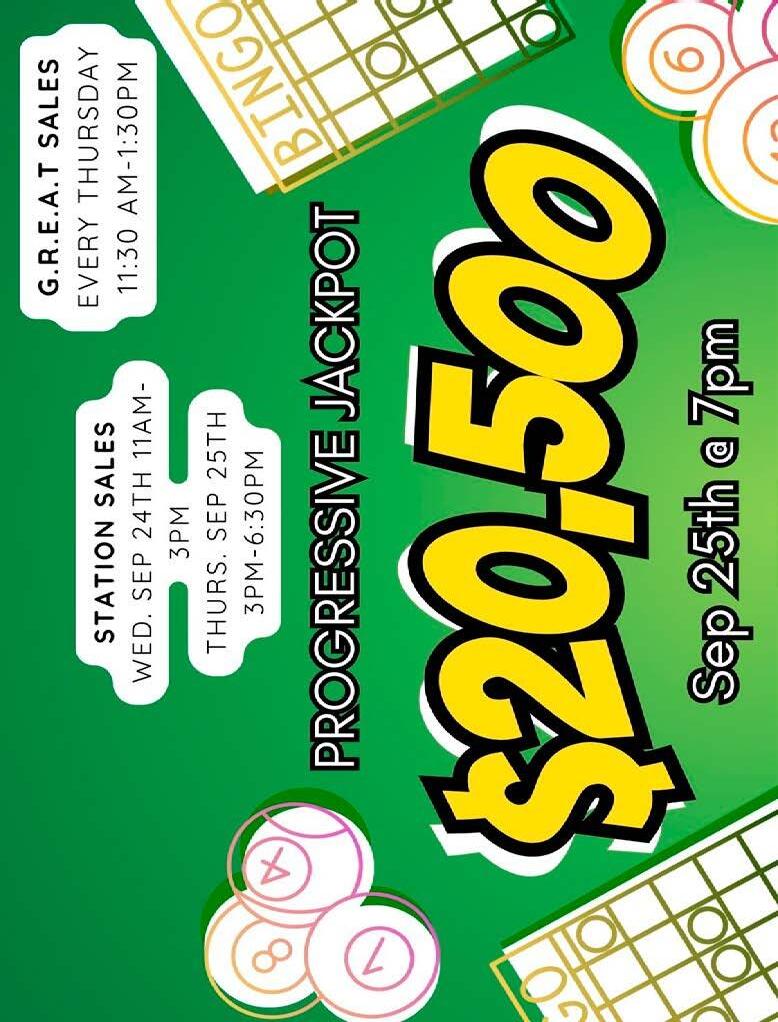
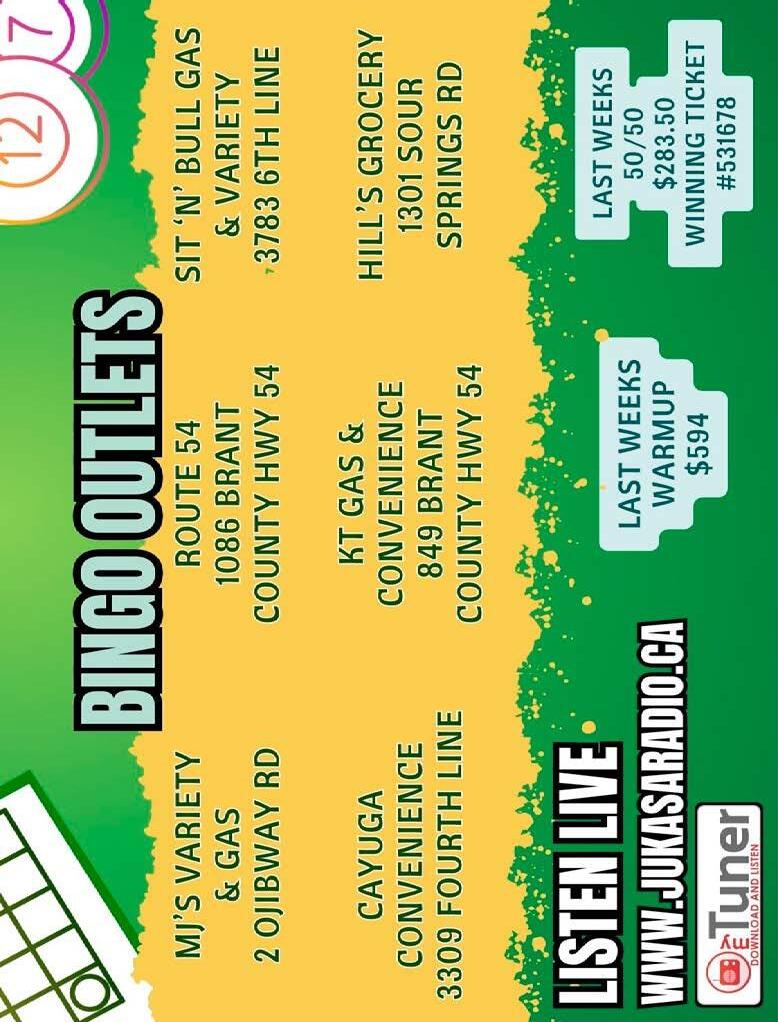

suicide, mental health, addictions, life expectancy, birth rates, infant and child health issues, chronic diseases, illness and injury incidence, and the availability of appropriate health services.
20. In order to address the jurisdictional disputes concerning Aboriginal people who do not reside on reserves, we call upon the federal government to recognize, respect, and address the distinct health needs of the Métis, Inuit, and off-reserve Aboriginal peoples.
21. We call upon the federal government to provide sustainable funding for existing and new Aboriginal healing centres to address the physical, mental, emotional, and spiritual harms caused by residential schools, and to ensure that the funding of healing centres in Nunavut and the Northwest Territories is a priority.
22. We call upon those who can effect change within the Canadian health-care system to recognize the value of Aboriginal healing
practices and use them in the treatment of Aboriginal patients in collaboration with Aboriginal healers and Elders where requested by Aboriginal patients.
23. We call upon all levels of government to increase the number of Aboriginal professionals working in the health-care field and Ensure the retention of Aboriginal healthcare providers in Aboriginal communities.
24. We call upon medical and nursing schools in Canada to require all students to take a course dealing with Aboriginal health issues, including the history and legacy of residential schools, the United Nations Declaration on the Rights of Indigenous Peoples, Treatiesand Aboriginal rights, and Indigenous teachings and practices. This will require skills-based training in intercultural competency, conflict resolution, human rights, and anti-racism.
Justice
25. We call upon the federal government to establish a written policy that reaffirms the inde-
pendence of the Royal Canadian Mounted Police to investigate crimes in which the government has its own interest as a potential or real party in civil litigation.
26. We call upon the federal, provincial, and territorial governments to review and amend their respective statutes of limitations to ensure that they conform to the principle that governments and other entities cannot rely on limitation defences to defend legal actions of historical abuse brought by Aboriginal people.
27. We call upon the Federation of Law Societies of Canada to ensure that lawyers receive appropriate cultural competency training, which includes the history and legacy of residential schools, the United Nations Declaration on the Rights of Indigenous Peoples, Treaties and Aboriginal rights, Indigenous law, and Aboriginal– Crown relations. This will require skills-based training in intercultural competency, conflict resolution, human

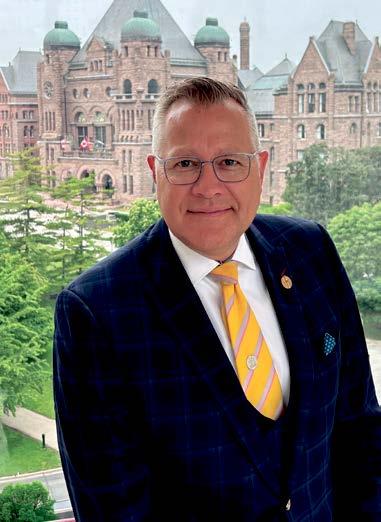
Supporting National Day for Truth and Reconciliation Today and everyday: Honour the lives of those last at residential schools and the stories and experiences of survivors and their families. Commit to ongoing learning about the truth and advocacy for reconciliation and healing.
rights, and anti-racism.
28. We call upon law schools in Canada to require all law students to take a course in Aboriginal people and the law, which includes the history and legacy of residential schools, the United Nations Declaration on the Rightsof Indigenous Peoples, Treaties and Aboriginal rights,Indigenous law, and Aboriginal–Crown relations.
This will require skillsbased training in intercultural competency, conflict resolution, human rights, and anti- racism.
29. We call upon the parties and, in particular, the federal government, to work collaboratively with plaintiffs not included in the Indian Residential Schools Settlement Agreement to have disputed legal issues determined expeditiously on an agreed set of facts.
30. We call upon federal, provincial, and territorial governments to commit to eliminating the overrepresentation of Aboriginal people in custody over the next decade, and to issue detailed annual reports that monitor and evaluate
progress in doing so.
31. We call upon the federal, provincial, and territorial governments to provide sufficient and stable funding to implement and evaluate community sanctions that will provide realistic alternatives to imprisonment for Aboriginal offenders and respond to the underlying causes of offending.
32. We call upon the federal government to amend the Criminal Code to allow trial judges, upon giving reasons, to depart from mandatory minimum sentences and restrictions on the use of conditional sentences.
33. We call upon the federal, provincial, and territorial governments to recognize as a high priority the need to address and prevent Fetal Alcohol Spectrum Disorder (FASD), and to develop, in collaboration with Aboriginal people, FASD preventive programs that can be delivered in a culturally appropriate manner.
34. We call upon the governments of Canada, the provinces, and territories to undertake reforms to the
criminal justice system to better address the needs of offenders with Fetal Alcohol Spectrum Disorder (FASD), including: Providing increased community resources and powers for courts to ensure that FASD is properly diagnosed, and that appropriate community supports are in place for those with FASD. Enacting statutory exemptions from mandatory minimum sentences of imprisonment for offenders affected by FASD.
35. We call upon the federal government to eliminate barriers to the creation of additional Aboriginal healing lodges within the federal correctional system.
36. We call upon the federal, provincial, and territorial governments to work with Aboriginal communities to provide culturally relevant services to inmates on issues such as substance abuse, family and domestic violence, and overcoming the experience of having been sexually abused.
37. We call upon the federal government to provide more supports for
CONTINUED ON PAGE 21
Tuesday, September 30, 2025,

September 30th, 2025
This day we honour the children who never returned home and Survivors of residential schools, as well as their families and communities.
At LiUNA Local 837, the word “UNION” means good wages, good benefits, a pension plan, safe working conditions and being treated with respect and dignity on the job. We are a strong and respected voice in the Greater Hamilton and Niagara, Cambridge, Waterloo Regions. We look to the past with pride and to the future with optimism, as we continue to build communities and opportunities for working families in our great communities.

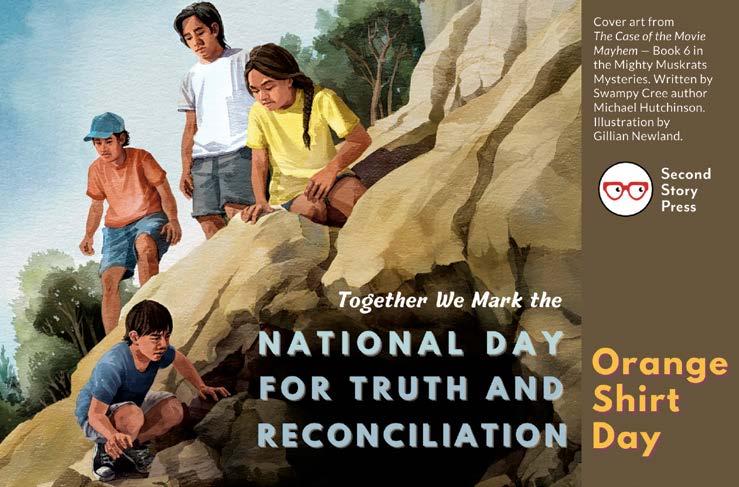

Aboriginal programming in halfway houses and parole services.
38. We call upon the federal, provincial, territorial, and Aboriginal governments to commit to eliminating the overrepresentation of Aboriginal youth in custody over the next decade.
39. We call upon the federal government to develop a national plan to collect and publish data on the criminal victimization of Aboriginal people, including data related to homicide and family violence victimization.
40. We call on all levels of government, in collaboration with Aboriginal people, to create adequately funded and accessible Aboriginal-specific victim programs and services with appropriate evaluation mechanisms.
41. We call upon the federal government, in consultation with Aboriginal organizations, to appoint a public inquiry into the causes of, and remedies for, the disproportionate victimization of Aboriginal women and girls. The inquiry’s
mandate would include:
i. Investigation into missing and murdered Aboriginal women and girls.
ii. Links to the intergenerational legacy of residential schools.
42. We call upon the federal, provincial, and territorial governments to commit to the recognition and implementation of Aboriginal justice systems in a manner consistent with the Treaty and Aboriginal rights of Aboriginal peoples, the Constitution Act, 1982, and the United Nations Declaration on the Rights of Indigenous Peoples, endorsed by Canada in November 2012.
43. We call upon federal, provincial, territorial, and municipal governments to fully adopt and implement the United Nations Declaration on the Rights of Indigenous Peoples as the framework for reconciliation.
44. We call upon the Government of Canada to develop a national action plan, strategies, and other concrete measures to achieve the goals of the United Nations Declaration
The Ontario Arts Council (OAC) recognizes the National Day for Truth and Reconciliation as a day of commemoration and mourning the innocent First Nations, Inuit, and Métis children who were harmed and whose lives were lost at Canada’s residential schools and the healing journey of survivors and their families and communities.
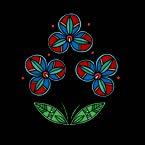
on the Rights of Indigenous Peoples.
Royal Proclamation and Covenant of Reconciliation
45. We call upon the Government of Canada, on behalf of all Canadians, to jointly develop with Aboriginal peoples a Royal Proclamation of Reconciliation to be issued by the Crown. The proclamation would build on the Royal Proclamation of 1763 and the Treaty of Niagara of 1764, and reaffirm the nation-to-nation relationship between Aboriginal peoples and the Crown. 46. We call upon the parties to the Indian Residential Schools Settlement Agreement to develop and sign a Covenant of Reconciliation that would identify principles for working collaboratively to advance reconciliation in Canadian society.
47. We call upon federal, provincial, territorial, and municipal governments to repudiate concepts used to justify European sovereignty over Indigenous peoples and lands, such as the Doctrine of Discovery and terra
CONTINUED ON PAGE 19
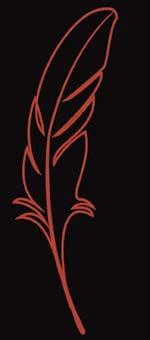

Mohawk Park 51 Lynnwood Drive, Brantford
Come and Contribute to our Community Dream Catcher Being Made During the Event While Supplies Last!
Variety of Indigenous Artisan Vendors and Community Information Booths
Serving Indian Tacos (while supplies last)
Openings 11:00am - 11:30am
Social Singers and Dancers 11:30am - 12:30pm
Dance Demonstrations 1:15pm - 1:45pm
Pow Wow Singers, Dancers, Spot Dances, Potato Dance, Intertribals, and Youth Candy Dance 2:00pm - 3:00pm
Closings 3:00pm - 3:30pm
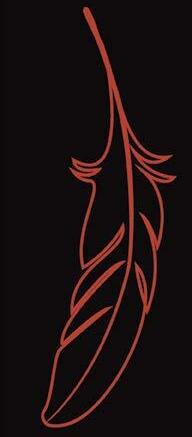
The OAC affirms its commitment to Indigenous artists and commun through programs and initiatives that specifically aim to support their creativity, collaboration and success. apply for funding through designed to meet the specific needs of Indigenous artists and arts groups an organizations.
Curatorial Projects: Indigenous and Culturally Diverse Indigenous Artists in Communities and Schools Projects Indigenous Arts Projects
Indigenous Visual Artists’ Materials January 30, 2026.
Some programs have the option for your application to be reviewed by Indigenous organizations: Exhibition Assistance Recommender Grants for Writers Recommender Grants for Theatre Creators
We invite you to connect with us. Whether you are new to OAC or recipient, our team is here to answer your questions, including Associate Indigenous Arts Officer, Mitchell Ellam, at mellam
www.arts.on.ca | Call 416-961-1660 (toll-free in Ontario: 1-800-387-0058) |









nullius, and to reform those laws, government policies, and litigation strategies that continue to rely on such concepts.








The National Day for Truth and Reconciliation coincides with Orange Shirt Day. This invites us to reflect, learn, and engage in meaningful dialogue about the history and lasting impacts of Residential Schools. Wear an Orange Shirt to be part of a larger conversation and commit to learning the truth on your reconciliation journey.

Join us on September 30 at West Harbour in Hamilton 1:00–4:00 PM for a meaningful gathering to honour National Day for Truth & Reconciliation.

905-546-4200
mayor@hamilton.ca
48. We call upon the church parties to the Settlement Agreement, and all other faith groups and interfaith social justice groups in Canada who have not already done so, to formally adopt and comply with the principles, norms, and standards of the United Nations Declaration on the Rights of Indigenous Peoples as a framework for reconciliation.
49. We call upon all religious denominations and faith groups who have not already done so to repudiate concepts used to justify European sovereignty over Indigenous lands and peoples, such as the Doctrine of Discovery and terra nullius. Equity for Aboriginal People in the Legal System
50. In keeping with the United Nations Declaration on the Rights of Indigenous Peoples, we call upon the federal government, in collaboration with Aboriginalorganizations, to fund the establishment of Indig-
In the spirit of truth and reconciliation, the City of Brantford stands with Indigenous people in our region and across Canada on September 30 th to remember and honour all of the Indigenous children that attended residential schools in Canada. Every Child Matters.
The City supports the Survivors’ Secretariat in their efforts to uncover, document and share the truth about what happened at the Mohawk Institute Residential School during its 136 years of operation. Learn more about their work and how to get involved by visiting www.survivorssecretariat.ca
enous law institutes for the development, use, and understanding of Indigenous laws and access to justice in accordance with the unique cultures of Aboriginal peoples in Canada.
51. We call upon the Government of Canada, as an obligation of its fiduciary responsibility, to develop a policy of transparency by publishing legal opinions it develops and upon which it acts or intends to act, in regard to the scope and extent of Aboriginal and Treaty rights.
52. We call upon the Government of Canada, provincial and territorial governments, and the courts to adopt the following legal principles:
i. Aboriginal title claims are accepted once the Aboriginal claimant has established occupation over a particular territory at a particular point in time.
ii. Once Aboriginal title has been established, the burden of proving any limitation on any rights arising from the existence of that title shifts to the party asserting such a limitation.
National Council for
53. We call upon the Parliament of Canada, in consultation and collaboration with Aboriginal peoples, to enact legislation to establish a National Council for Reconciliation. The legislation would establish the council as an independent, national, oversight body with membership jointly appointed by the Government of Canada and national Aboriginal organizations, and consisting of Aboriginal and non-Aboriginal members.
54. We call upon the Government of Canada to provide multi-year funding for the National Council for Reconciliation to ensure that it has the financial, human, and technical resources required to conduct its work, including the endowment of a National Reconciliation Trust to advance the cause of reconciliation.
55. We call upon all levels of government to provide annual reports or any current data requested by the National Council for Reconciliation so that it can report on the progress towards reconciliation.
SEPTEMBER 30 TH NATIONAL DAY FOR TRUTH AND RECONCILIATION
Brant Haldimand Norfolk Catholic District School Board will come together on September 30 in a spirit of hope, truth and reconciliation to honour former residential school students and survivors, their families, and communities. It is essential for all to remember that
BRANT HALDIMAND NORFOLK Catholic District School Board
56. We call upon the prime minister of Canada to formally respond to the report of the National Council for Reconciliation by issuing an annual “State of Aboriginal Peoples” report, which would outline the government’s plans for advancing the cause of reconciliation.
Professional Development and Training for Public Servants
57. We call upon federal, provincial, territorial, and municipal governments to provide education to public servants on the history of Aboriginal peoples, including the history and legacy of residential schools, the United Nations Declaration on the Rights of Indigenous Peoples, Treaties and Aboriginal rights, Indigenous law, and Aboriginal–Crown relations. This will require skills- based training in intercultural competency, conflict resolution, human rights, and anti-racism.
Church Apologies and Reconciliation
58. We call upon the Pope to issue an apology to Survivors, their families, and communities for the Roman Catholic Church’s role in the spiritual, cultural, emotional, physical, and sexual abuse of First Nations, Inuit, and Métis children in Catholic-run residential schools. We call for that apology to be similar to the 2010 apology issued to Irish victims of abuse and to occur within one year of the issuing of this Report and to be delivered by the Pope in Canada.
59. We call upon church parties to the Settlement Agreement to develop ongoing education strategies to ensure that their respective congregations learn about their church’s role in colonization, the historyand legacy of residential schools, and why apologies to former residential school students, their families, and communities were necessary.
60. We call upon leaders of the church parties to the Settlement Agreement and all other faiths, in collaboration with Indigenous spiritual leaders, Survivors, schools of theology, seminaries, and other religious training centres, to develop and teach curriculum for all student clergy, and all clergy and staff who work in Aboriginal communities, on the need to respect Indigenous spirituality in its own right, the history and
legacy of residential schools and the roles of the church parties in that system, the history and legacy of religious conflict in Aboriginal families and communities, and the responsibility that churches haveto mitigate such conflicts and prevent spiritual violence.
61. We call upon church parties to the Settlement Agreement, in collaboration with Survivors and representatives of Aboriginal organizations, to establish permanent funding to Aboriginal people.
Education for reconciliation
62. We call upon the federal, provincial, and territorial governments, in consultation and collaboration with Survivors, Aboriginal peoples, and educators, to Make age-appropriate curriculum on residential schools, Treaties, and Aboriginal peoples’ historical and contemporary contributions to Canada a mandatory education requirement for Kindergarten to Grade Twelve students.
63. We call upon the Council of Ministers of Education, Canada to maintain an annual commitment to Aboriginal education issues, including: Developing and implementing Kindergarten to Grade Twelve curriculum and learning resources on Aboriginal peoples in Canadian history, and the history and legacy of residential schools. Sharing information and best practices on teaching curriculum related to residential schools and Aboriginal history.
64. We call upon all levels of government that provide public funds to denominational schools to require such schools to provide an education on comparative religious studies, which must include a segment on Aboriginal spiritual beliefs and practices developed in collaboration with Aboriginal Elders.
65. We call upon the federal government, through the Social Sciences and Humanities Research Council, and in collaboration with Aboriginal peoples, post-secondary institutions and educators, and the National Centre for Truth and Reconciliation and its partner institutions, to establish a national research program with multi-year funding to advance understanding of reconciliation. Youth Programs
66. We call upon the federal government to es-
tablish multi- year funding for community-based youth organizations to deliver programs on reconciliation, and establisha national network to share information and best practices.Museums and Archives
67. We call upon the federal government to provide funding to the Canadian Museums Association to undertake, in collaboration with Aboriginal peoples, a national review of museum policies and best practices to determine the level of compliance with the United Nations Declaration on the Rights of Indigenous Peoples and to make recommendations.
68. We call upon the federal government, in collaboration with Aboriginal peoples, and the Canadian Museums Association to mark the 150th anniversary of Canadian Confederation in 2017 by establishing a dedicated national funding program for commemoration projects on the theme of reconciliation.
69. We call upon Library and Archives Canada to: Fully adopt and implement the United Nations Declaration on the Rights of Indigenous Peoples and the United Nations Joinet-Orentlicher Principles, as related to Aboriginal peoples’ inalienable right to know the truth about what happened and why, with regard to human rights violations committed against them in the residential schools.
70. We call upon the federal government to provide funding to the Canadian Association of Archivists to undertake, in collaboration with Aboriginal peoples, a national review of archival policies and best practices to Determine the level of compliance with the United Nations Declaration on the Rights of Indigenous Peoples and the United Nations Joinet-Orentlicher Principles, as related to Aboriginal peoples’ inalienable right to know the truth about what happened and why, with regard to human rights violations committed against them in the residential schools.
Missing Children and Burial Information
71. We call upon all chief coroners and provincial vital statistics agencies that have not provided to the Truth and Reconciliation Commission of Canada their records on the deaths of Aboriginal children in the care of residential school
authorities to make these documents available to the National Centre for Truth and Reconciliation.
72. We call upon the federal government to allocate sufficient resources to the National Centre for Truth and Reconciliation to allow it to develop and maintain the National Residential School Student Death Register established by the Truth and Reconciliation Commission of Canada.
73. We call upon the federal government to work with churches, Aboriginal communities, and former residential school students to establish and maintain an online registry of residential school cemeteries, including, where possible, plot maps showing the location of deceased residential school children.
74. We call upon the federal government to work with the churches and Aboriginal community leaders to inform the families of children who died at residential schools of the child’s burial location, and to respond to families’ wishes for appropriate commemoration ceremonies and markers, and reburial in home communities where requested.
75. We call upon the federal government to
work with provincial, territorial, and municipal governments, churches, Aboriginal communities, former residential school students, and current landowners to develop and implement strategies and procedures for the ongoing identification, documentation, maintenance, commemoration, and protection of residential school cemeteries or other sites at which residential school children were buried. This is to include the provision of appropriate memorial ceremonies and commemorative markers to honour the deceased children.
76. We call upon the parties engaged in the work of documenting, maintaining, commemorating, and protecting residential school cemeteries to adopt strategies in accordance with the following principles: The Aboriginal community most affected shall lead the development of such strategies. Information shall be sought from residential school Survivors and other Knowledge Keepers in the development of such strategies. Aboriginal protocols shall be respected before any potentially invasive technical inspection and investigation of a cemetery site.
National Centre for Truth and Reconciliation
77. We call upon provincial, territorial, municipal, and community archives to work collaboratively with the National Centre for Truth and Reconciliation to identify and collect copies of all records relevant to the history and legacy of the residential school system, and to provide these to the National Centre for Truth and Reconciliation.
78. We call upon the Government of Canada to commit to making a funding contribution of $10 million over seven years to the National Centre for Truth and Reconciliation, plus an additional amount to assist communities to research and produce histories of their own residential school experience and their involvement in truth, healing, and reconciliation.
Commemoration
79. We call upon the federal government, in collaboration with Survivors, Aboriginal organizations, and the arts community, to develop a reconciliation framework for Canadian heritage and commemoration. Developing and implementing a national heritage plan and strat-
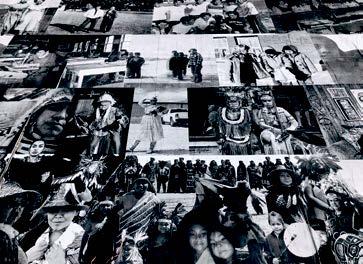
SEPTEMBER 30TH
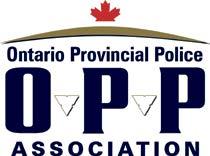
By 2RT Staff
OHSWEKEN - The Six Nations Police are seeking the assistance of the public for information regarding an armed robbery that took place on Friday night.
On Friday, September 19th, 2025, the Six Nations Police were advised of a robbery at a local business on Indian Line Road. Officers attended the area and spoke with
witnesses who advised that four suspects entered the business at approximately 9:45 PM. Two suspects were carrying firearms. No injuries were reported to police. Merchandise within the store and an undetermined amount of cash was stolen. The suspects are believed to have left the area in a 4-door grey BMW type sedan, headed towards Cockshutt Road.
Anyone with informa-
tion about the incident, or who may have relevant doorbell surveilance or dashcam video, are asked to contact the Six Nations Police at 519-445-2811. If you have information but want to remain anonymouse, you can contact Crime Stoppers at 1-800222-8477 (TIPS) or report online at www.crimstoppersbb.com where you may be eligible to receive a cash reward up to $2,000.









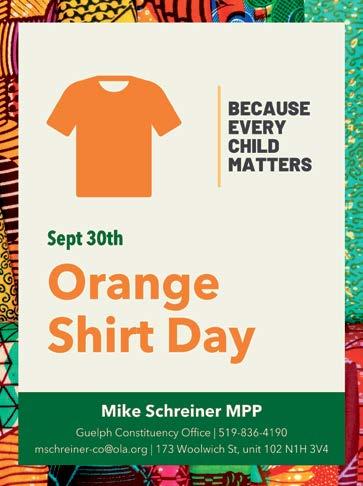
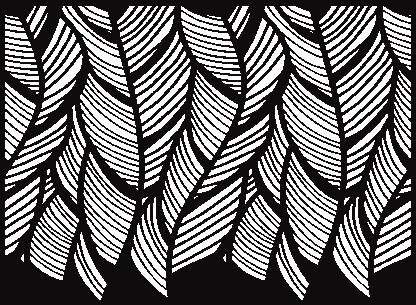





























If anyone were to ask you to name one Six Nations athlete known by Onkwehon:we and non-native alike, who would you say? Stan Jonathan, Brandon Montour, maybe? An older generation would likely say Tom Longboat. All deserving of that honour. But there were so many more that not many, maybe only family, would remember that were also deserving the honour of recollection.
Tom Longboat was not only a long distance road runner, most famous for his winning of the the Around the Bay Road Race in Hamilton in 1906, and the Boston Marathon in 1907, he was also a lacrosse star and a tireless promoter of several other budding Six Nations road racers. He started the
know the score.
Six Nations Racing Club where he helped train young runners using his fame and connections to get many of them into both amateur and professional road racing circles.
Six Nations’ brothers Hilton and Wellington Green at one time were just about as famous as Longboat himself among long distance road running aficionados.
Longboat ran under the sponsorship of the Irish-Canadian Club who has reached out to him. In turn, most aspiring Six Nations road racers were also obliged to join and represent the Irish-Canadians Association based in Hamilton.
May 1907, a Toronto Star news article reports, “The one mile race was a bitter battle. There were 11 starters, including the crack runners of the Indian reserve, Clinch, Silversmith, and Jamieson,

Hilton Green and Adam Henry.
The article goes into great detail about the race but near the end of the race it. Got dramatic.
“Green plugged along doggedly, but on the last quarter Skene had a 50yard lead. Green started to sprint, drew even 150 yards out, and in a ding-dong finish just beat Skene out. Both were leg weary. Skene was wobbling, but the Indian ran true.”
Longboat ran in the five mile distance along with fellow Six Nations racers, Charles Silversmith and James Clinch.
“Longboat went right away at the start and Silversmith and Clinch died early. Crawford, running well, dragged into second place, Muirhead and Cranson ran neck and neck for third. At the fourth mile Longboat lapped the last two.”
Longboat was long and spindly, but was a tough as a bull-dog when provoked on the lacrosse pitch.
In that day, there was a big tough player, known as Devil Krause, from Tonawanda, who was the known heavy weight champion of the league.
A Buffalo Lawyer and lacrosse fan, W.A. McIntire happened to watch a lacrosse game which Longboat was playing against Krause.
Years later he managed Longboat.
"I knew you were game the day I saw you check Devil Krause in a lacrosse game here in September, 1906.'
McIntyre went on to tell Longboat and Krause went at it that day.
"They certainly did light into one another,” he said. “Tom Longboat and his brother were on the Canadian team, and it fell to Tom to check Devil
Krause, a big Indian who wore a couple of little horns in his cap. Krause was a very dirty player.
“He laid into Tom, but Tom came right back at him, and gave him a good trimming. I suppose people will laugh when I say it now, but Longboat's speed and staying powers struck me as the feature of the game."
Norm General was written up as a one-to-watch prospect in 1921 and was inspired by Longboat’s success.
Other Six Nations distance runners that made names for themselves include Bobby Kerr, Siles Isaac, Huron Martin, Austin Bomberry, Wesley Peters, Peter John, Fred Simpson, and Henry (Red Hawk) Jackson. All were well known and respected by their piers and owe their success, at least in part, to Tom Longboat.
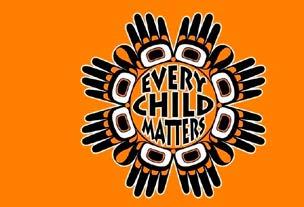


egy for commemorating residential school sites, the history and legacy of residential schools, and the contributions of Aboriginal peoples to Canada’s history.
80. We call upon the federal government, in collaboration with Aboriginal peoples, to establish, as a statutory holiday, a National Day for Truth and Reconciliation to honour Survivors, their families, and communities, and ensure that public commemoration of the history and legacy of residential schools remains a vital component of the reconciliation process.
81. We call upon the federal government, in collaboration with Survivors and their organizations, and other parties to the Settlement Agreement, to commission and install a publicly accessible, highly visible, Residential Schools National Monument in the city of Ottawa to honour Survivors and all the children who were lost to their families and communities.
82. We call upon provincial and territorial governments, in collaboration with Survivors and their organizations, and other parties to the Settlement Agreement,
to commission and install a publicly accessible, highly visible, Residential Schools Monument in each capital city to honour Survivors and all the children who were lost to their families and communities.
83. We call upon the Canada Council for the Arts to establish, as a funding priority, a strategy for Indigenous and non-Indigenous artists to undertake collaborative projects and produce works that contribute to the reconciliation process.
Media and Reconciliation
84. We call upon the federal government to restore and increase funding to the CBC/Radio-Canada, to enable Canada’s national public broadcaster to support reconciliation, and be properly reflective of the diverse cultures, languages, and perspectives of Aboriginal peoples
85. We call upon the Aboriginal Peoples Television Network, as an independent non-profit broadcaster with programming by, for, and about Aboriginal peoples, to support reconciliation.
86. We call upon Canadian journalism programs and media schools to require education for all
students on the history of Aboriginal peoples, including the history and legacy of residential schools, the United Nations Declaration on the Rights of Indigenous Peoples, Treaties and Aboriginal rights, Indigenous law, and Aboriginal– Crown relations.
Sports and Reconciliation
87. We call upon all levels of government, in collaboration with Aboriginal peoples, sports halls of fame, and other relevant organizations, to provide public education that tells the national story of Aboriginal athletes in history.
88. We call upon all levels of government to take action to ensure long-term Aboriginal athlete development and growth, and continued support for the North American Indigenous Games, including funding to host the games and for provincial and territorial team preparation and travel.
89. We call upon the federal government to amend the Physical Activity and Sport Act to support reconciliation by ensuring that policies to promote physical activity as a funda-
CONTINUED ON PAGE 28

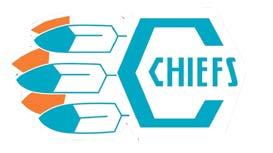
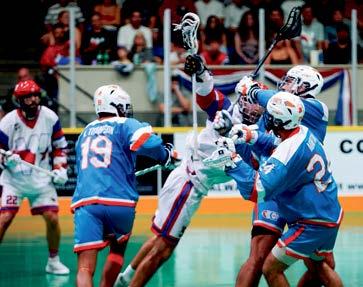
Guelph Indigenous Community Council, Guelph Outdoor School, and Guelph Museums offer an after-school gathering that honours the children lost to residential schools and supports the healing of survivors and their families.
“Blankets are more than warmth—they are memory, protection, and legacy.”

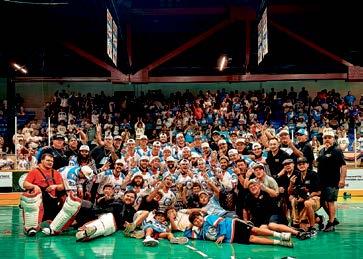

mental element of health and well-being, reduce barriers to sports participation, increase the pursuit of excellence in sport, and build capacity in the Canadian sport system, are inclusive of Aboriginal peoples.
90. We call upon the federal government to ensure that national sports policies, programs, and initiatives are inclusive of Aboriginal peoples, including, but not limited to, establishing In collaboration with provincial and territorial governments, stable funding for, and access to, community sports programs that reflect the diversecultures and traditional sporting activities of Aboriginal peoples.
91. We call upon the officials and host countries of international sporting events such as the Olympics, Pan Am, and Commonwealth games to ensure that Indigenous peoples’ territorial protocols are respected, and local Indigenous communities are engaged in all aspects of planning and participating in such events.
Business and Reconcil-
iation
92. We call upon the corporate sector in Canada to adopt the United Nations Declaration on the Rights ofIndigenous Peoples as a reconciliation framework and to apply its principles, norms, and standards to corporate policy and core operational activities involving Indigenous peoples and their lands and resources. This would include, but not be limited to, the following:
i. Commit to meaningful consultation, building respectful relationships, and obtaining the free, prior, and informed consent of Indigenous peoples before proceeding with economic development projects.
ii. Ensure that Aboriginal peoples have equitable access to jobs, training, and education opportunities in the corporate sector, and that Aboriginal communities gain long-term sustainable benefits from economic development projects.
iii. Provide education for management and staff on the history of Aboriginal peoples, including the history and legacy of residential schools, the United Nations
Declaration on the Rights of Indigenous Peoples, Treaties and Aboriginal rights, Indigenous law, and Aboriginal–Crown relations. This will require skills based training in intercultural competency, conflict resolution, human rights, and anti-racism.
Newcomers to Canada
93. We call upon the federal government, in collaboration with the national Aboriginal organizations, to revise the information kit for newcomers to Canada and its citizenship test to reflect a more inclusive history of the diverse Aboriginal peoples of Canada, including information about the Treaties and the history of residential schools.

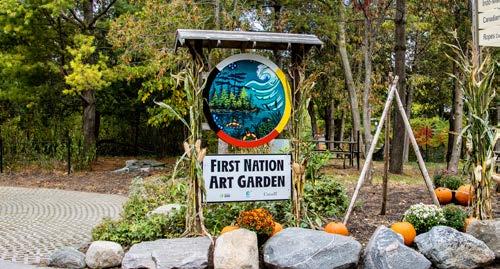
94. We call upon the Government of Canada to replace the Oath of Citizenship with the following: I swear (or affirm) that I will be faithful and bear true allegiance to His Majesty King Charles III, King of Canada, His Heirs and Successors, and that I will faithfully observe the laws of Canada including Treaties with Indigenous Peoples, and fulfill my duties as a Canadian citizen.
As part of our commitment to Indigenous communities, your Toronto Zoo is proud to offer complimentary general admission year-round* to all First Nations, Inuit, and Métis people.
and other
To learn about our National Day for Truth and Reconciliation events, and our partnership with Native Child and Family Services of Toronto, scan the QR code.
Feb.1st: Application Deadline for Summer semester Apply on-line! Fall Marks/ Progress Reports due for all continuing students. Levels 3 & 4 (Master or Ph.D. students) provide Letter of Good Academic Standing. Winter course registration/timetable and detailed tuition fees due.
May 1st: Application Deadline for Fall or Fall/Winter semester(s) Apply on-line! Winter Marks/Progress Reports due for all funded students.
Levels 3 & 4 (Master or Ph.D. students) provide Letter of Good Academic Standing. Summer course registration/timetable and detailed tuition fees due.
Aug 1st: Official transcripts are due from students funded for any of the three previous application periods (Summer/Fall/Winter). For all APPROVED FALL applications
- Any documentation that was requested by the Funding Advisor to be submitted to GRPSEO by August 1, (as outlined in the “Check List of Required Documentation” form provided to the applicant), and not received by this deadline date will result in CANCELLATION of the approved application and loss of funding.
Oct. 1st: Application Deadline for Winter semester – Apply on-line! Summer Marks/ Progress Reports due for all continuing students. Levels 3 & 4 (Master or Ph.D. students) provide Letter of Good Academic Standing. Fall course registration/timetable and detailed tuition fees due.
STUDENTS MUST APPLY ON-LINE BY SPECIFIED DEADLINE
Sept 30 Office Closed: National Day of Truth and Reconciliation (Orange Shirt Day)
Oct. 13 Office Closed: Thanksgiving Day Oct. 31 Deadline to Submit Graduate Promotion Items Nov. 7 Fall Semester Contact Required From All Students (Check With Your GRPSEO Funding Advisor) Nov. 11 Office Closed: Observance of Remembrance Day Dec. 23 Office Closed: Christmas Closure Jan. 2, 2026 Office Reopens
Please check the local newspapers, our website at www.grpseo.org Facebook/Instagram or give us a call at (519) 445-2219 for more information.
My name is Zachary Miller, I am Mohawk, Turtle Clan. My parents are Kevin & Jean Miller. My grandparents are the late Eulalee & Lawrence Jonathan and Vivian & the late Peter Miller.
I would say that I started my educational career prior to starting in post-secondary by working as a summer student with the Six Nations Family Health Team. I learned so much from this team. It grew my passion to one day come back home to my community and serve my people through healthcare. After that summer of 2009, I started my undergraduate degree in Health Sciences (BHSc.) at Western University. While in this program I also completed a minor in First Nations studies, under the mentorship of Dr. Susan Hill and it was also where I started to learn Kanien’kéha. It was near the end of my Health Sciences & First Nations Studies degree that I grew my love of public health. Following the completion of my undergraduate degree in 2014, I was then accepted into a Masters of Public Health (MPH) program, where I specialized in Indigenous Health. Through this program, I was introduced to various Indigenous health researchers as well as various Indigenous health systems across the world. I completed my MPH in 2016 and soon after returned to community and took on a role with Six Nations of the Grand River (SNGR), working closely with the Director of Health at the time, Lori Davis Hill, starting in 2017. However, I then left this role when I was accepted into the Doctor of Medicine (MD) program at Schulich School of Medicine at Western University. This was one of my proudest moments in my post-secondary education to be accepted. Not a lot of us get the opportunity to enter into a professional program at this level. I knew my family and many in community where supportive of me taking this step. I completed the first year of the program. While in medical school, I began to learn that my passion was less for individual clinical care and more for population health care and finding ways to prevent and even break the system barriers that make us unwell. It was an incredibly hard decision, but I ended up leaving the program to more fully gain experience in health leadership and continue my public health education. I returned to Six Nations Health Services (now called the Department of Well-Being) in 2018 and took on the role of Administrative Director of the Six Nations Family Health Team. This opportunity really felt full circle for me, in that I was able to bring my education and training to a space where I could apply it on a daily basis. Then as we all know in 2020, the COVID-19 pandemic hit. I worked closely with Debra Jonathan, Lori Davis Hill and other leaders to put our community emergency response in place. Unlike most of my MPH classmates during

my training, I had actually focused a lot of my course work on learning more about pandemics & epidemics and finding ways to respond to them. I was able to bring this knowledge back to community; through the advice I provided to the Emergency Control Group and Incident Management Team. In 2021, I then took the next step in my post secondary education. I started my Doctor of Public Health (DrPH) at the Dalla Lana School of Public Health at the University of Toronto. This institution is the top public health school in the country and one of the top public health academic institutions in the world. I was very thankful and humbled to enter into the program. I also was a part of the inaugural cohort for the program, meaning my cohort was the first group of students that had ever taken a DrPH; not only at this university, but within Canada.

Doolittle, Roxanne Nicole October 25, 1995 - September 21, 2025

With heavy hearts our daughter Roxanne Doolittle passed away. Left behind her son Anthony. Parents Bruce & Lydia Doolittle & siblings Brian & Samantha. Seven nephews & two nieces. Predeceased by her younger sister Shania 2024.
Funeral will be at residence.
Join our cooking class!
Learn to make delicious Korean pancakes Ohsweken Baptist Church Saturday October 4,2025 11am to 1 pm
Come enjoy a fun hands-on cooking experience and taste authentic Korean flavour
To register contact David Kim 647-929-8695 po9875@gmail.com
Bake Sale
Ohsweken Baptist Church October 11,2025 9am to 1pm (or sellout)
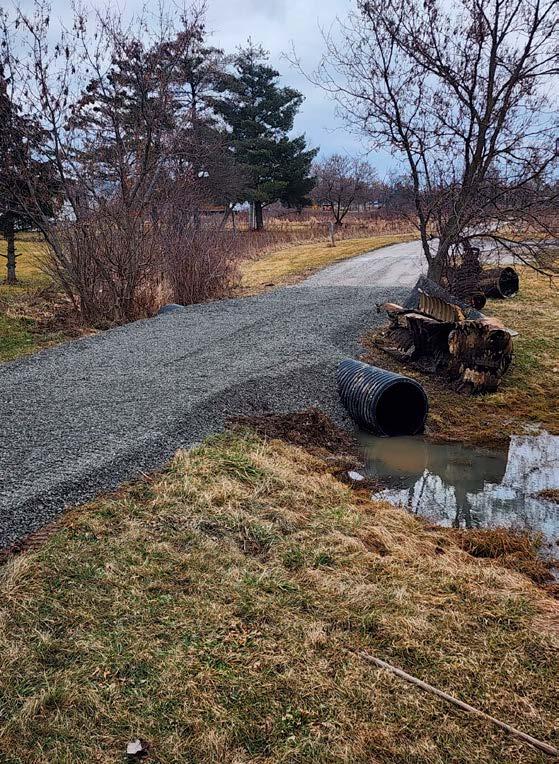


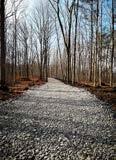
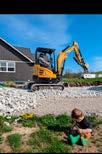
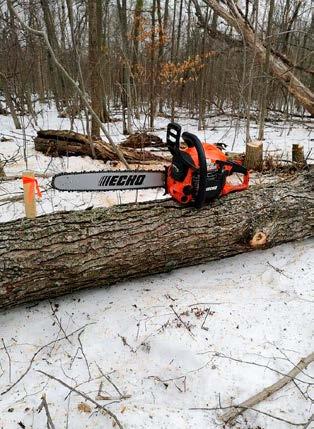
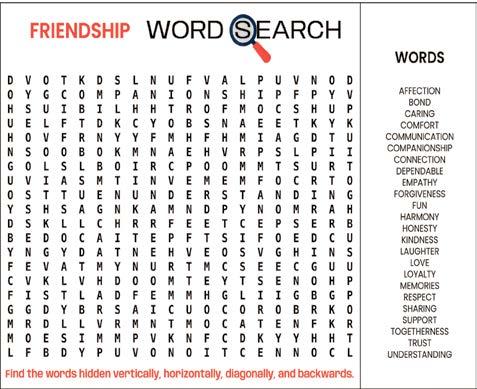
1. Gas usage measurement
4. Muslim mystic
8. Towards the mouth or oral region
10. Monday (Spanish)
11. Frame for a coffin
12. Rub out
13. John __, English educator l467-l5l9
15. Small round particle
16. Chilean seaport
17. News service
18. Pay for dinner
21. Glamorous city
22. Subway rodent
23. “The Raven” author
24. Buddhist festival
25. Cost, insurance and freight (abbr.)
26. Indigenous person of Thailand
27. “The Blonde Bombshell”
34. Series-ending episodes
35. Bluish greens
36. Aquatic mammal
37. Unit of measurement
38. Eye membranes
39. Indian god of dissolution
40. People of Scotland
41. Leak slowly through 42. Rock icon Turner
43. Midway between south and southeast
1. Large hat covering 2. “From what is earlier” (Latin)
3. Celtic
4. Retirement region
5. A way to change posture
6. Touches
7. A small island
9. Rubbish
10. A citizen of Laos
12. A place to dance 14. 19th letter of Greek alphabet
15. Mild expression of surprise
17. 17th letter of Greek
alphabet
19. Descriptions
20. Men’s fashion accessory
23. Thieves of the sea
24. Prohibit
25. Card game
26. French and Belgian river
27. Underling
28. Downwind
29. Type of medication
30. German city
31. Animal disease
32. Martini ingredients
33. Get away from
34. Stuffed (French)
36. Type of precipitation












ARIES – Mar 21/Apr 20
Partnerships require extra attention this week, Aries. Focus on clear communication and mutual understanding. Compromise will lead to positive outcomes in all situations.
TAURUS – Apr 21/May 21
This week your health and wellness comes into focus, Taurus. Consider a new exercise program or make adjustments to your diet. It’s also a good time to get organized.
GEMINI – May 22/Jun 21
Gemini, you might feel a surge of inspiration related to hobbies, artistic pursuits or even your social life. Embrace all of the creative endeavors that will come your way.
CANCER – Jun 22/Jul 22
You may find yourself redecorating or enjoying quiet time in the house, Cancer. Your life right now puts a strong focus on domestic pursuits and you may spend more time at home.
LEO – Jul 23/Aug 23
Leo, your mind is sharp and curious. Consider taking a class or joining a group hobby you find engaging. This week largely will be about local connections.
VIRGO – Aug 24/Sept 22
Virgo, financial stability is a key theme in your life right now. Review your budget and look for practical ways to save money. You also may have to seek ways to boost your income..
LIBRA – Sept 23/Oct 23
This week is a great time for self-improvement and setting new goals, Libra. Project confidence when interacting with your professional network, and pursue what matters to you.
SCORPIO – Oct 24/Nov 22
You are comfortable being out of the spotlight, Scorpio. This will serve you well when you spend some time in quiet reflection this week. Look inward and assess your goals.
SAGITTARIUS – Nov 23/Dec 21
Connect with your friends or community and take part in group activities that bring you joy, Sagittarius. You might just find new inspiration to widen your social network.
CAPRICORN – Dec 22/Jan 20
Your professional life takes center stage this week, Capricorn. Opportunities for recognition and advancement may pop up. Showcase your people skills.
AQUARIUS – Jan 21/Feb 18
Aquarius, broaden your perspective. This is a fine week for learning new things or engaging with novel ideas. Embrace any challenges that get you thinking.
PISCES – Feb 19/Mar 20
Pisces, you might be dealing with financial matters that require collaboration with family members. It is important to have open conversation before reaching any conclusions.

